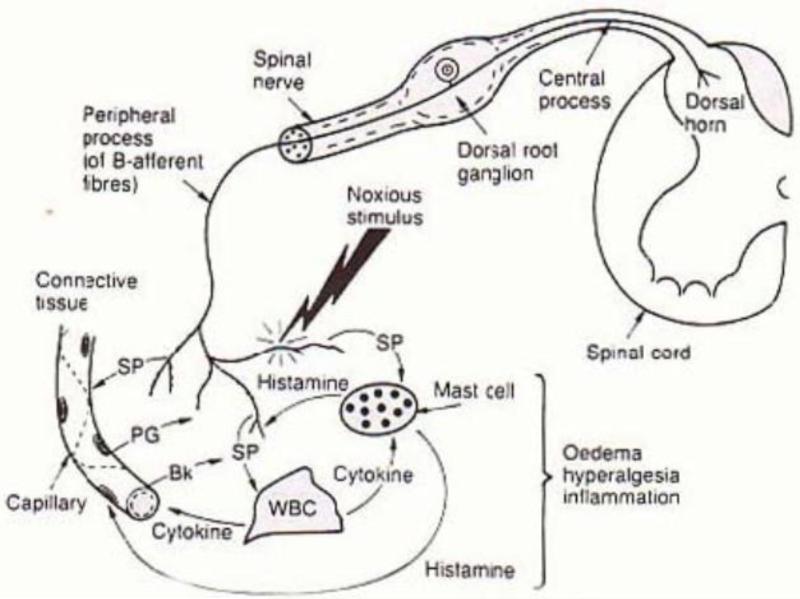Figure 3.
Neurogenic inflammation. In the presence of persistent nociceptive bombardment, the dorsal root ganglion will release substance P and CGRP (not shown) antidromically into the peripheral tissue. The peripheral secretion of these substances can lead to a cascade of events, including the degranulation of local mast cells, local vasodilation, plasma extravasation and the development of a sensitizing biochemical soup. This process of neurogenic inflammation leads to the enhanced release of endogenous substances, such as bradykinin, serotonin, norepinephrine, nerve growth factor, and adenosine. (In: Everett, T., Dennis M., Ricketts E,. eds. Physiotherapy in mental health : a practical approach. Oxford UK: Butterworth/Heinemann; 1995: 102-126, used with permission).

